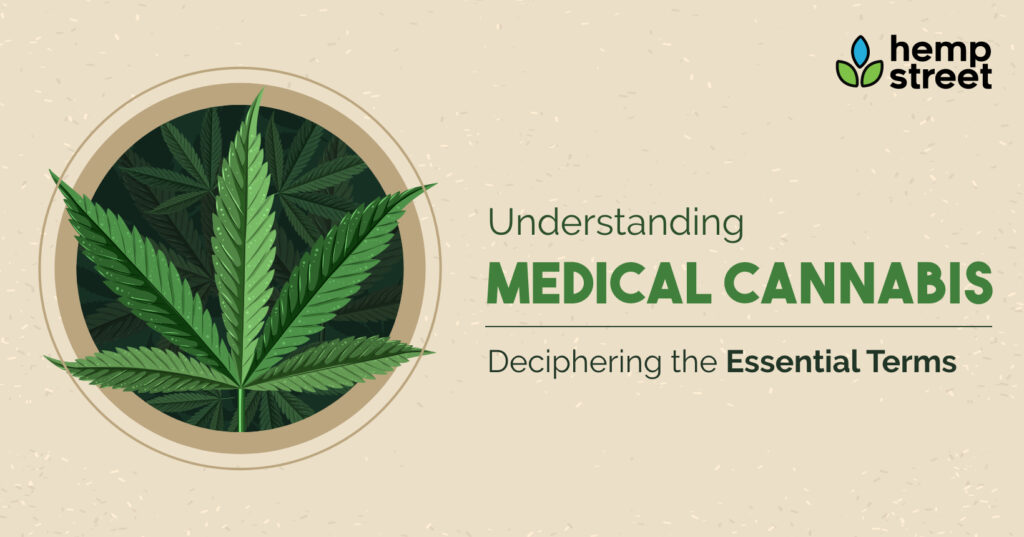It isn’t a surprise that Cannabis has become a cornerstone herb in the modern pharmacological industry. Researchers and medical experts worldwide are seeking this invaluable plant. They aim to study its properties and make use of its extensive benefits.
The internet is full of innumerable such studies, researches, and clinical observations on this herb and its therapeutic uses. But lack of proper understanding can be a hindrance for people seeking to treat themselves with Cannabis-based medication.
It is hard for people to get acquainted with scientific terms and jargon. Thus, people tend to misunderstand and distort facts, which is dangerous. This article will help you decipher some of the most frequently occurring terms in the niche.
What is Cannabis?
The word ‘cannabis’ is a classification term that refers to the flowering category of plants. Those plants belong to the Cannabaceae family, which includes over 170 species as its members. Experts often categorize them under three principle subspecies: Cannabis Indica, Cannabis Sativa, and Cannabis Ruderalis.
Cannabis originated in and is indigenous to Asia. People can primarily find it in the central and southern regions of the continent. Be it as a food supplement, fiber production, or for medical purposes; Cannabis has many uses.
Medical Cannabis
Cannabis plants have extensive medicinal uses and health benefits. Hence, medical practitioners prescribe certain parts or strains of the plants to their patients because this herb aids the treatment of various diseases and disorders. (Read more: Why Cannabis is considered a God Herb in Ayurveda. Add link)
It is used for alleviating medical symptoms and prescribed by a doctor with recommended dosing, it is categorized as Medical Cannabis.
Hemp
Hemp is a specific type of cannabis plant, also known by the scientific name Cannabis Sativa L. It contains low levels of intoxicating THC and high levels of non-intoxicating CBD. Both of which we will get into later in this article.
Hemp is a very versatile plant with a vast spectrum of its uses. People use its stalk for biofuel development and textile manufacture. Industries deploying seeds for Hemp-seed oil manufacturing have increased. Moreover, skin care products, food supplements, and beverages also use Hemp flower extracts.
THC
THC stands for tetrahydrocannabinol. It is one of the principal chemical compounds in cannabis plants. It is psychoactive and is responsible for the sense of high and euphoria, which the plant is known for.
Doctors prescribe it to relieve pain, reduce inflammation, and regulate anxiety. THC primarily affects the brain’s activities. It can be thinking, coordination, sense of perception, and memory.
CBD
CBD stands for cannabidiol. It is as significant in its composition and usage as THC. But it is slightly different from THC as it does not cause intoxication or a high. CBD can come in many forms, like oil, tincture, capsules, etc. It helps with treating pain, heart problems, and mental health conditions. They include anxiety, depression, and insomnia.
THC and CBD medicine are emerging to become the best pain-relieving medicine industry and an effective alternative to traditional painkillers. (Internal link – Read Vijaya for treating pain)
Cannabinoids
Cannabinoids are the chemical compounds found in cannabis plants. They are of three types:
- Phytocannabinoids
Phytocannabinoids are the naturally occurring cannabinoids in plants. Not only that, there are at least one hundred and thirteen such chemical secretions. Each has its varied uses and effects. Two of the most significant and most studied cannabinoids among them are THC and CBD. They both comprise a majority of the plants’ chemical composition.
- Endocannabinoids
They are the chemicals produced by our bodies to activate the cannabinoid receptors spread throughout them. These receptors are responsible for regulating critical physiological functions and work on achieving homeostasis.
When people consume cannabinoids, they bind with these receptors to produce the desired therapeutic effects. The endocannabinoid system is an essential system and the most prominent biological receptor system in our bodies. Studies show that it helps regulate mood, endocrine system, immune system, memory, appetite, and much more.
- Synthetic Cannabinoids
Synthetic cannabinoids are those which people synthesize in laboratories. Researchers base them on the structure of the naturally occurring cannabinoids. People use these artificial structures for experiments and medical research purposes.
Dosing
Dosing means giving someone a calculated and guided amount of medication (dose) for treating a particular ailment, under the guidance of a medical practitioner. For an effective and safe medicinal effect of Cannabis, it is crucial to understand the correct dosing.
Adequate dosing depends upon your body chemistry and the conditions you face. In addition to that, the concentration of THC and CBD contribute to the requisite dosing power (in milligrams).
Homeostasis
Homeostasis is a condition of biological and functional balance in the human body. The stable function of critical physiological processes is essential for the body to achieve this. They include the brain, immune, endocrine, etc.
As mentioned earlier, endocannabinoids in our bodies are responsible for maintaining homeostasis and regulating the processes discussed above. And Cannabis-derived chemicals and medication greatly influence the body’s homeostatic condition and help establish balance.
References
https://www.prima.co/magazine/what-s-what-hemp-cannabis-and-marijuana/
https://en.wikipedia.org/wiki/Cannabinoid#Synthetic_cannabinoids
https://www.thestreet.com/lifestyle/difference-between-cbd-vs-thc-14627877




